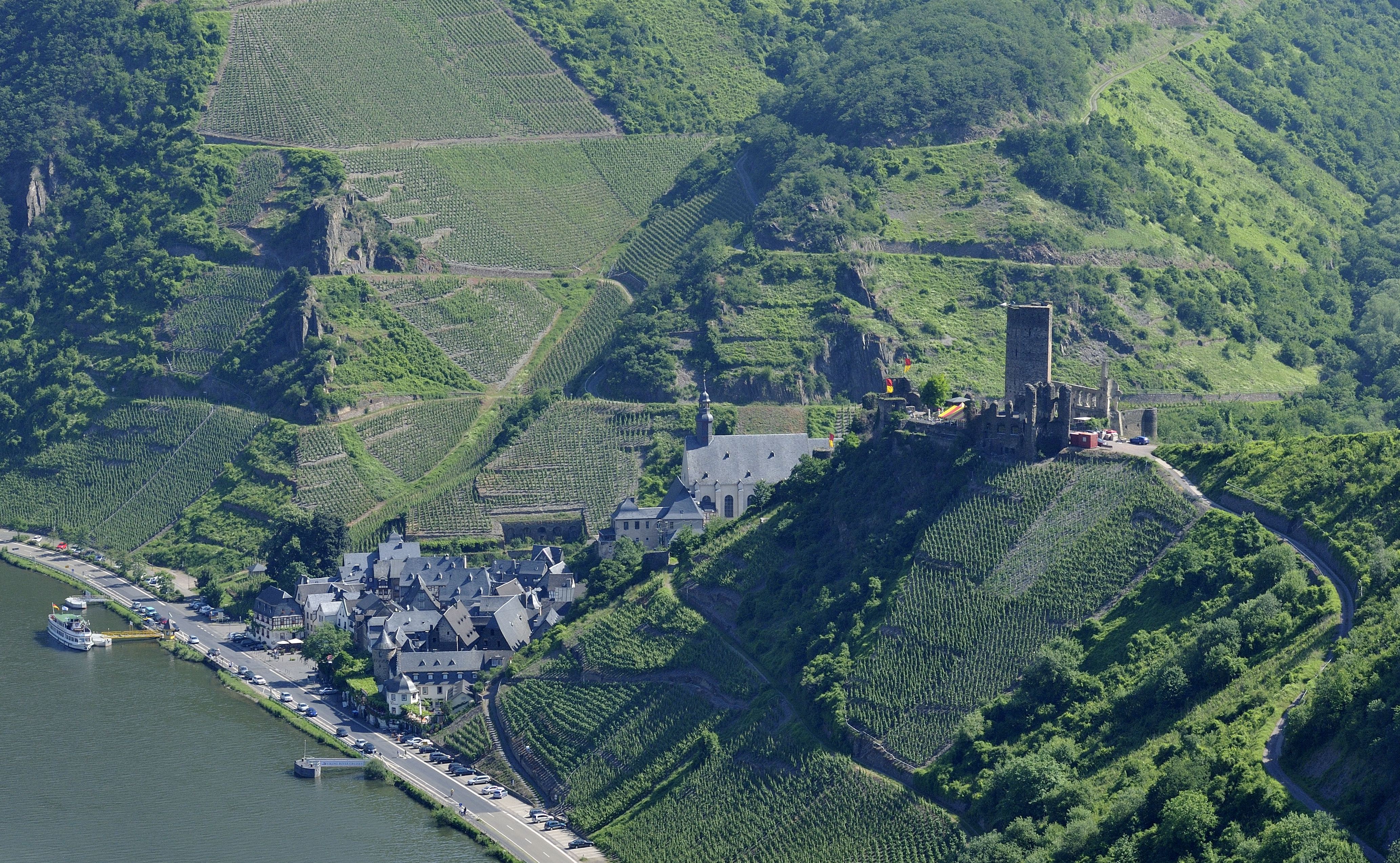
The small village of Beilstein is located directly on the right bank of the Moselle and is also nicknamed the “Sleeping Beauty of the Moselle” due to its very well-preserved historic townscape
Beilstein is described by many tourists as the most beautiful town at the Moselle, and it also became clear to me while walking through the romantic cobblestone streets or alleys
It was a nice clear and sunny day when I was running errands in Koblenz. While I was driving into town I saw the sign to Cochem. Since it was still early in the day, I thought of making the most of my afternoon. My motto is to always see something new. Out of curiosity, I wanted to explore what’s on the opposite side of the Moselle. I remembered a Facebook post I saw and made the decision to drive to the picturesque town of Beilstein
.

I parked my car directly on the Moselstrasse in a paid parking lot, from which it was only a few minutes’ walk to the old town.
Looking across, I saw the Moselle Tour boats that takes tourists to Cochem on the other side. It was about 5 minute walk into old town Beilstein
Beilstein is relatively compact and easy to explore on foot, it really isn’t that big. Everywhere I walked were cobbled and winding streets with beautifully restored half-timbered houses lovingly decorated with flowers. I really liked the picturesque market square from anno 1322.


It is quite manageable strolling through the tight alleys these days with less tourists (due to Covid). The narrow buildings and the well-frequented restaurants and cafés have a very special charm. The former “Zehnthaus” on the market square, the former parish church of St. Christopher and the old “Fürstgräfliche Kellnerei”, a waiter shop from the 18th century are also worth seeing.

There were hardly any structural changes in Beilstein until the 20th century, certainly one of the reasons why the very well-preserved medieval townscape still exists today. Only about 140 people live in town, many tourists come to visit every day and liven up the streets.
For centuries, the town lived from wine growing, a viticulture that is dying. Whatever is left of Moselle Vintners, many get subsidized by the state. Now Tourism in particular, has replaced the important source of income for the many cafes, restaurants and accommodations.

Burg Metternich
You can walk up the Metternich castle or ruin via a steep climb directly from the city, or drive and park your car there and then walk about 5 minutes on a moderate footpath to the castle. The castle ruins are located on a 60 m high rock ledge that drops steeply on three sides.

Beilstein is towered by the ruins of Metternich Castle, which I admired looking up from below. The history of the castle goes back to the year 1268, when it was first mentioned in old documents
The Sign below reads:
The castle was mentioned first in 1268. It was possibly built by Walter von Braunshorn. After the demise of the Braunshorn family in 1363 the castle had a new owner, Cuno von Winneburg und Beilstein. In 1634 the castle was occupied by the Spanish and Swedes. After the Winneburgers died in 1637 the castle was given to the Lords of Metternich.
On 27th February 1689 the beautiful castle was destroyed by the French (Ludwig XIV) under Baron Montalt, then again more destruction on 12. October the same year. The last Ownership was under the Austrian State chancellor Klemens Wenzel Lothar, and later Prince of Metternich


Since Beilstein is a small compact town, I concluded my visit there after about 2 hours of walking and a glass of Riesling at one of those wine bars. After getting back to my car I drove across a bridge to Cochem where I spent the rest of my afternoon.





























